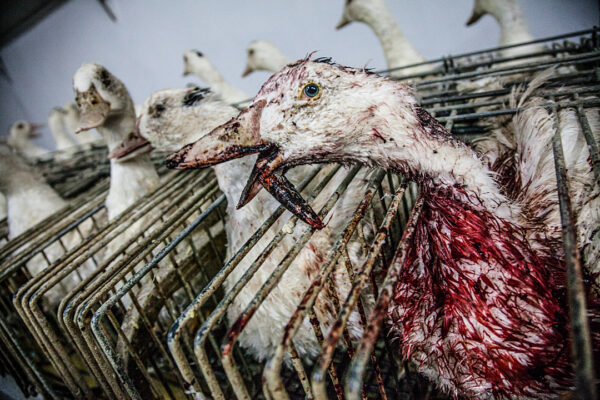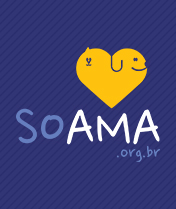Foie Gras

This photograph is one of the 204 images included in the book HIDDEN: Animals in the Anthropocene, published by We Animals. HIDDEN is an unflinching book of photographs documenting our relationship with non-human animals around the globe, as depicted through the lenses of 40 award-winning photojournalists. HIDDEN focuses on the invisible animals in our lives: those with whom we have a close relationship and yet fail to see. They are the animals we eat and the animals we wear. They are the animals used in research and for entertainment, as well as the animals we sacrifice in the name of tradition and religion. The stories within its pages are revelatory and brutal. The Anthropocene is the proposed name for the current geologic epoch. In this era, human activity is the dominant influence on the climate, the environment, and all life on Earth. As we enter a new decade, an estimated 80 billion land animals continue to be used and consumed by humans each year, the majority of whom are raised and killed within industrial agricultural systems. These numbers do not include fish or other marine life, as they are not counted as individualstheir quantities are reported only by the tonne. Buy the book.
O foie gras é o órgão doente dum ganso ou dum pato, engordado de maneira forçada, várias vezes por dia, com um tubo de metal de 20 a 30 centímetros enfiado na garganta até o estômago. Para obrigar o seu corpo a produzir o patê de fígado, a ave tem de engolir em somente alguns segundos uma tal quantidade de milho, que o fígado acaba por atingir praticamente dez vezes o seu tamanho normal, e desenvolve uma doença chamada esteatose hepática.
Debatendo-se quando o tubo é violentamente inserido na sua garganta, ou pela simples contração do esôfago provocada pela necessidade de vomitar, a ave arrisca-se a asfixiar e a se perfurar mortalmente o pescoço.
A introdução do tubo provoca lesões no pescoço no qual se desenvolvem dolorosas inflamações e infecções. Esta desequilibrada superalimentação provoca frequentemente doenças no sistema digestivo, que podem ser mortais.
Pouco após este choque diário da engorda, a ave sofre imediatamente de diarreias e de arquejos. Para além disso, as dimensões do seu fígado hipertrofiado tornam a respiração difícil e o andamento doloroso.
Se este tratamento continuasse, provocaria a morte dos animais engordados. A matança chega a tempo de dissimular as consequências da engorda. Os mais fracos chegam muitas vezes à sala de matança já moribundos, e outros tantos nem conseguem resistir até lá : a taxa de mortalidade dos patos é de dez a vinte vezes mais elevada durante o período de engorda.
Na natureza, os patos passam a maior parte do tempo da sua vida na água. Mas, nestas criações, muitos encontram-se fechados em barracões e em gaiolas onde as suas patas se ferem por causa do chão feito de rede de arame. As gaiolas são tão pequenas que nem sequer se podem virar, muito menos pôr-se de pé ou estender as asas.

This photograph is one of the 204 images included in the book HIDDEN: Animals in the Anthropocene, published by We Animals. HIDDEN is an unflinching book of photographs documenting our relationship with non-human animals around the globe, as depicted through the lenses of 40 award-winning photojournalists.
HIDDEN focuses on the invisible animals in our lives: those with whom we have a close relationship and yet fail to see. They are the animals we eat and the animals we wear. They are the animals used in research and for entertainment, as well as the animals we sacrifice in the name of tradition and religion. The stories within its pages are revelatory and brutal.
The Anthropocene is the proposed name for the current geologic epoch. In this era, human activity is the dominant influence on the climate, the environment, and all life on Earth. As we enter a new decade, an estimated 80 billion land animals continue to be used and consumed by humans each year, the majority of whom are raised and killed within industrial agricultural systems. These numbers do not include fish or other marine life, as they are not counted as individualstheir quantities are reported only by the tonne. Buy the book.
Trinta milhões de gansos morrem assim somente na França onde a iguaria é considera chique.
Alguns lugares do mundo conseguiram proibir outros não por pura pressão de chefs de cozinha que insistem em considerar o foie gras uma prato cultural.

